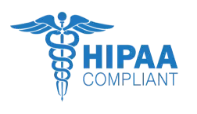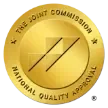In recent articles, we’ve discussed how to explain why dentists are treating Obstructive Sleep Apnea, and we’ve given some guidance regarding explaining what to expect with a home sleep study. Let’s now look at some of the most frequently asked questions about sleep apnea you’re likely to get asked during a new patient appointment.
To read other articles primarily for sleep apnea dentists, please read our SleepTest.com blog.

How severe is my sleep apnea?
You can explain to your new sleep apnea patient that Obstructive Sleep Apnea ranges from mild to severe based on a measurement system called the apnea-hypopnea index (AHI). The AHI measures the number of breathing pauses the patient experiences per hour of sleep. This will be part of your results after your patient has taken their two-night at-home sleep study from sleeptest.com.
Obstructive sleep apnea is classified by severity in this way according to Hopkinsmedicine.org:
- Severe obstructive sleep apnea means that the AHI is greater than 30 (more than 30 episodes per hour)
- Moderate obstructive sleep apnea means that the AHI is between 15 and 30 (episodes per hour)
- Mild obstructive sleep apnea means that the AHI is between 5 and 15 (episodes per hour)
How is treatment determined?
Whether or not your patient needs treatment for sleep apnea depends on the severity of their findings, symptoms, and health conditions. For example, with patients with risks for heart disease, the treatment may vary compared to a patient with no risk for heart disease.
As their treating sleep dentist, you must explain to new patients what treatment is indicated based on the at-home sleep study findings, your comprehensive evaluation, your medical history, and your presenting symptoms.
It’s essential to explain to your patients that there is no cookie-cutter approach to sleep medicine. Every patient’s treatment plan will vary because every patient will present with a different array of symptoms. Every patient’s medical history will be different, so it’s impossible to know the details of their treatment plan until all factors are carefully considered.
What are the most common treatments for sleep apnea?
Most of your new patients will likely have heard adverse reports of CPAP, but you have to explain that CPAP is a hugely successful sleep apnea treatment option for some patients.
Since many sleep apneics cannot tolerate the noise, bulkiness, and discomfort associated with Continuous Positive Airway Pressure, another treatment option is highly effective (and much easier than CPAP).
Oral Appliance Therapy (OAT) is taking the nation by storm as most people with sleep apnea can tolerate putting an oral appliance in their mouth to sleep. The other benefits of OAT include:
- Highly effective in reducing the most common symptoms of OSA, including daytime sleepiness, moodiness, and concentration and memory problems.
- Reduces/eliminates snoring in most patients who use OAT.
- Easy to take with you when traveling
- Requires no electricity
- Quiet
- Comfortable
- Discreet
- May help reduce the symptoms of TMJ also
Are there any “cons” associated with OAT?
While you never want to focus on the negatives of any treatment, your patients will ask if there are disadvantages to OAT. Though few, there are some “cons” you may need to tell your patients about regarding OAT:
- Occasionally causes excessive drooling
- May affect bite
- May cause dryness of the mouth
- May take a few nights to get used to (but much easier to get used to than CPAP)
How much does Oral Appliance Therapy cost?
Every single patient must know the cost before committing to Oral Appliance Therapy. While some insurance providers cover OAT's (or partial) cost, most oral appliances for sleep apnea treatment run from $1500-$3000. Of course, if your patient needs a specific cost at his first appointment, you will provide that. Please explain any additional costs, such as the initial consultation, examination, and follow-up visits to check patient progress.
Learn More About SleepTest.com Today
We would love to work collaboratively to provide your patients the best sleep apnea treatment available today—you as their sleep dentist. SleepTest.com’s fantastic software, equipment, patient portal, and interactive design allow you to see your patients’ findings anytime. It’s user-friendly, and you’ll love that you can reach more patients in much less time with our help.
Please contact SleepTest.com today to learn more about how our CRM system works, or you can even speak to a customer service representative who will walk you through the process if you’re ready to join the thousands of other sleep dentists working with SleepTest.com.

Feeling tired all the time, even after a full night’s sleep? You might be suffering from sleep apnea. Discover how an at-home sleep test can help diagnose the root cause of your fatigue—and get you back to feeling like yourself.

Spring is here—and so is the pollen. For the millions dealing with seasonal allergies, the symptoms can be more than just annoying. And if you also have sleep apnea, those stuffy nights and restless sleep can get even worse.
Let’s take a closer look at how spring allergies and sleep apnea affect each other—and what steps you can take to sleep more comfortably.




